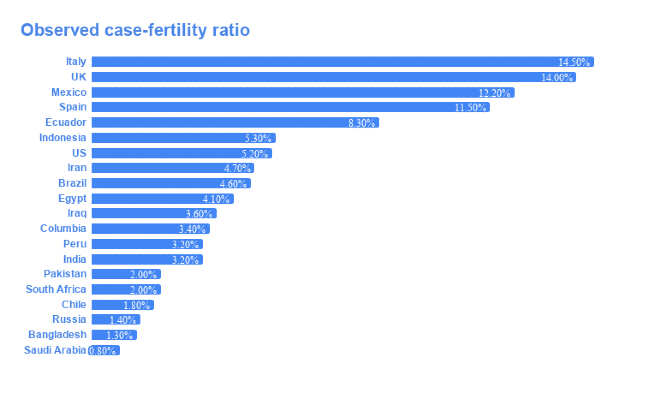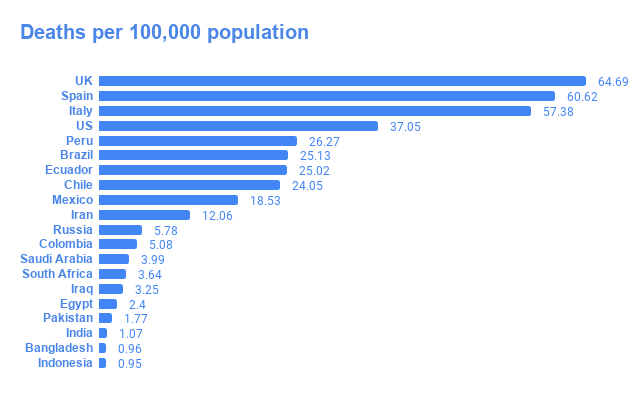Top Searches
- News
- India News
- Why is coronavirus mortality rate different for countries?
Why is coronavirus mortality rate different for countries?

NEW DELHI: The mortality rate is one of the effective ways of measuring the extent of damage caused by the novel coronavirus pandemic.
The mortality rate is defined as — number of deaths divided by the number of confirmed cases.
According to John Hopkins University & Medicine, the difference in mortality rate across the countries could be due to the following reasons —
The number of coronavirus deaths is measured against two factors — confirmed cases or a country's/region's population.
We look at the number of deaths per 100 confirmed cases for 20 most-affected countries.

The number of deaths per 100,000 population for the 20 most-affected countries.
 Data source: John Hopkins University & Medicine
Data source: John Hopkins University & Medicine
The mortality rate is defined as — number of deaths divided by the number of confirmed cases.
According to John Hopkins University & Medicine, the difference in mortality rate across the countries could be due to the following reasons —
- Differences in the number of people tested: Extensive testing ensures better tracking of the virus and thus ensuring there are no unreported deaths from the virus. This lowers the case-fatality ratio.
- Demographics: If the population has a higher percentage of older people, the mortality rate is likely to be higher.
- The healthcare system: For example, mortality may rise as hospitals become overwhelmed and have fewer resources.
- Other factors, many of which remain unknown.
The number of coronavirus deaths is measured against two factors — confirmed cases or a country's/region's population.
We look at the number of deaths per 100 confirmed cases for 20 most-affected countries.

The number of deaths per 100,000 population for the 20 most-affected countries.

FacebookTwitterLinkedinMail
Start a Conversation
end of article
Trending Topics
Quick Links
Coronavirus in MumbaiCoronavirus in KolkataCoronavirus in HyderabadCoronavirus in DelhiCoronavirus in BangaloreCoronavirus symptomsCoronavirus in IndiaWhat is CoronavirusCoronavirus NewsSolar EclipseNPRWhat is NRCCAB BillCAB and NRCRTI BillPodcast newsLok SabhaShiv SenaYSRCPCongressBJP newsUIDAIIndian ArmyISRO newsSupreme Court